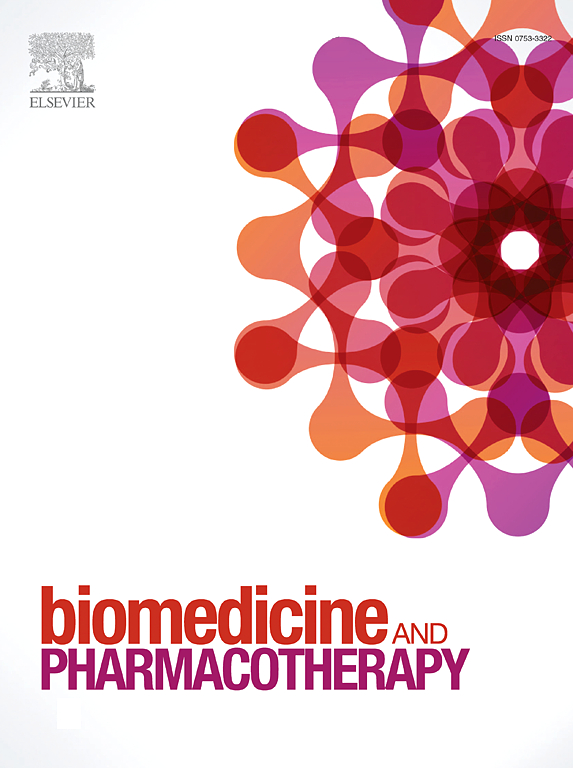Unravelling the modified T cell receptor through Gen-Next CAR T cell therapy in Glioblastoma: Current status and future challenges
IF 6.9
2区 医学
Q1 MEDICINE, RESEARCH & EXPERIMENTAL
引用次数: 0
Abstract
Purpose
Despite current technological advancements in the treatment of glioma, immediate alleviation of symptoms can be catered by therapeutic modalities, including surgery, chemotherapy, and combinatorial radiotherapy that exploit aberrations of glioma. Additionally, a small number of target antigens, their heterogeneity, and immune evasion are the potential reasons for developing targeted therapies. This oncologic milestone has catalyzed interest in developing immunotherapies against Glioblastoma to improve overall survival and cure patients with high-grade glioma. The next-gen CAR-T Cell therapy is one of the effective immunotherapeutic strategies in which autologous T cells have been modified to express receptors against GBM and it modulates cytotoxicity.
Methods
In this review article, we examine preclinical and clinical outcomes, and limitations as well as present cutting-edge techniques to improve the function of CAR-T cell therapy and explore the possibility of combination therapy.
Findings
To date, several CAR T-cell therapies are being evaluated in clinical trials for GBM and other brain malignancies and multiple preclinical studies have demonstrated encouraging outcomes.
Implications
CAR-T cell therapy represents a promising therapeutic paradigm in the treatment of solid tumors but a few limitations include, the blood-brain barrier (BBB), antigen escape, tumor microenvironment (TME), tumor heterogeneity, and its plasticity that suppresses immune responses weakens the ability of this therapy. Additional investigation is required that can accurately identify the targets and reflect the similar architecture of glioblastoma, thus optimizing the efficiency of CAR-T cell therapy; allowing for the selection of patients most likely to benefit from immuno-based treatments.
通过Gen-Next CAR - T细胞治疗胶质母细胞瘤揭示修饰的T细胞受体:现状和未来挑战。
目的:尽管目前胶质瘤的治疗技术进步,但可以通过治疗方式立即缓解症状,包括手术、化疗和利用胶质瘤畸变的联合放疗。此外,少量的靶抗原、它们的异质性和免疫逃避是开发靶向治疗的潜在原因。这一肿瘤学里程碑催化了开发针对胶质母细胞瘤的免疫疗法以提高总生存率和治愈高级别胶质瘤患者的兴趣。新一代CAR-T细胞疗法是一种有效的免疫治疗策略,其中自体T细胞被修饰为表达针对GBM的受体并调节细胞毒性。方法:在这篇综述文章中,我们检查了临床前和临床结果,局限性,并提出了提高CAR-T细胞治疗功能的前沿技术,并探讨了联合治疗的可能性。迄今为止,几种CAR - t细胞疗法正在GBM和其他脑恶性肿瘤的临床试验中进行评估,多项临床前研究显示出令人鼓舞的结果。意义:CAR-T细胞疗法代表了一种很有前景的实体瘤治疗模式,但一些局限性包括血脑屏障(BBB)、抗原逃逸、肿瘤微环境(TME)、肿瘤异质性及其抑制免疫反应的可塑性削弱了这种疗法的能力。需要进一步的研究来准确地识别靶点并反映胶质母细胞瘤的相似结构,从而优化CAR-T细胞治疗的效率;允许选择最有可能从免疫治疗中受益的患者。
本文章由计算机程序翻译,如有差异,请以英文原文为准。
求助全文
约1分钟内获得全文
求助全文
来源期刊
CiteScore
11.90
自引率
2.70%
发文量
1621
审稿时长
48 days
期刊介绍:
Biomedicine & Pharmacotherapy stands as a multidisciplinary journal, presenting a spectrum of original research reports, reviews, and communications in the realms of clinical and basic medicine, as well as pharmacology. The journal spans various fields, including Cancer, Nutriceutics, Neurodegenerative, Cardiac, and Infectious Diseases.

 求助内容:
求助内容: 应助结果提醒方式:
应助结果提醒方式:


